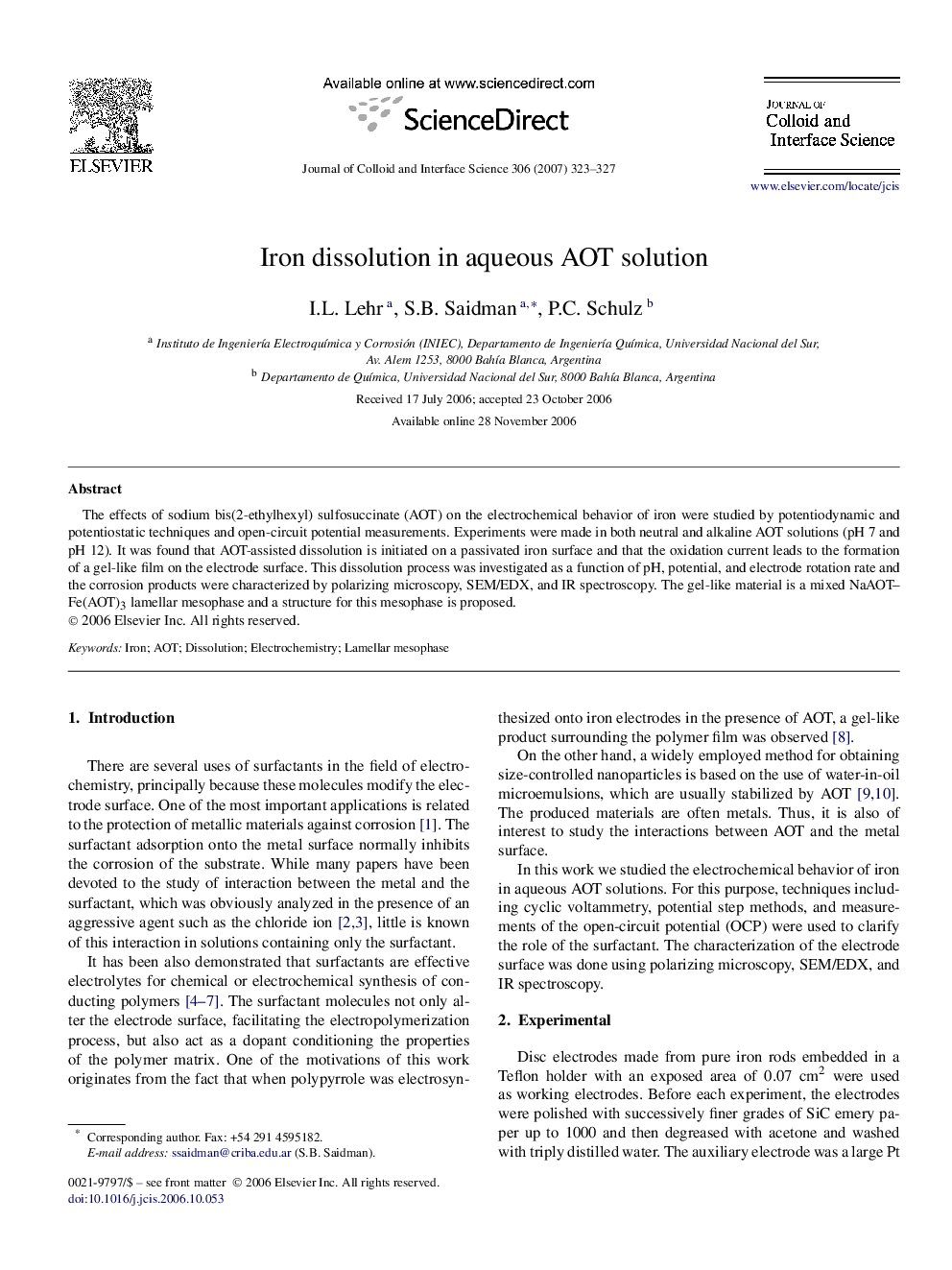| کد مقاله | کد نشریه | سال انتشار | مقاله انگلیسی | نسخه تمام متن |
|---|---|---|---|---|
| 612764 | 880706 | 2007 | 5 صفحه PDF | دانلود رایگان |

The effects of sodium bis(2-ethylhexyl) sulfosuccinate (AOT) on the electrochemical behavior of iron were studied by potentiodynamic and potentiostatic techniques and open-circuit potential measurements. Experiments were made in both neutral and alkaline AOT solutions (pH 7 and pH 12). It was found that AOT-assisted dissolution is initiated on a passivated iron surface and that the oxidation current leads to the formation of a gel-like film on the electrode surface. This dissolution process was investigated as a function of pH, potential, and electrode rotation rate and the corrosion products were characterized by polarizing microscopy, SEM/EDX, and IR spectroscopy. The gel-like material is a mixed NaAOT–Fe(AOT)3 lamellar mesophase and a structure for this mesophase is proposed.
The interaction between iron and AOT has been studied by using electrochemical and surface analysis techniques. The oxidation of iron leads to the formation of a mixed lamellar mesophase.Figure optionsDownload as PowerPoint slide
Journal: Journal of Colloid and Interface Science - Volume 306, Issue 2, 15 February 2007, Pages 323–327